By Greg Wagner and Brian Peterson.
Brian Peterson is a biologist at the University of Nebraska at Kearney and coordinates the M.S Biology Online Program. His research focus is white-tailed deer antler metrics. He is also an avid hunter and outdoorsman.
Maybe you’re a hunter. Maybe you’re not.
But, there’s a unique form of hunting you will enjoy. It is a challenging and rewarding pastime that makes for an excellent family outdoor activity this time of year.
It is deer shed or cast (scientific term) antler hunting.
Beginning in late December and continuing through April, white-tailed and mule deer shed their antlers for regrowth purposes in Nebraska. Most deer drop their antlers in March.
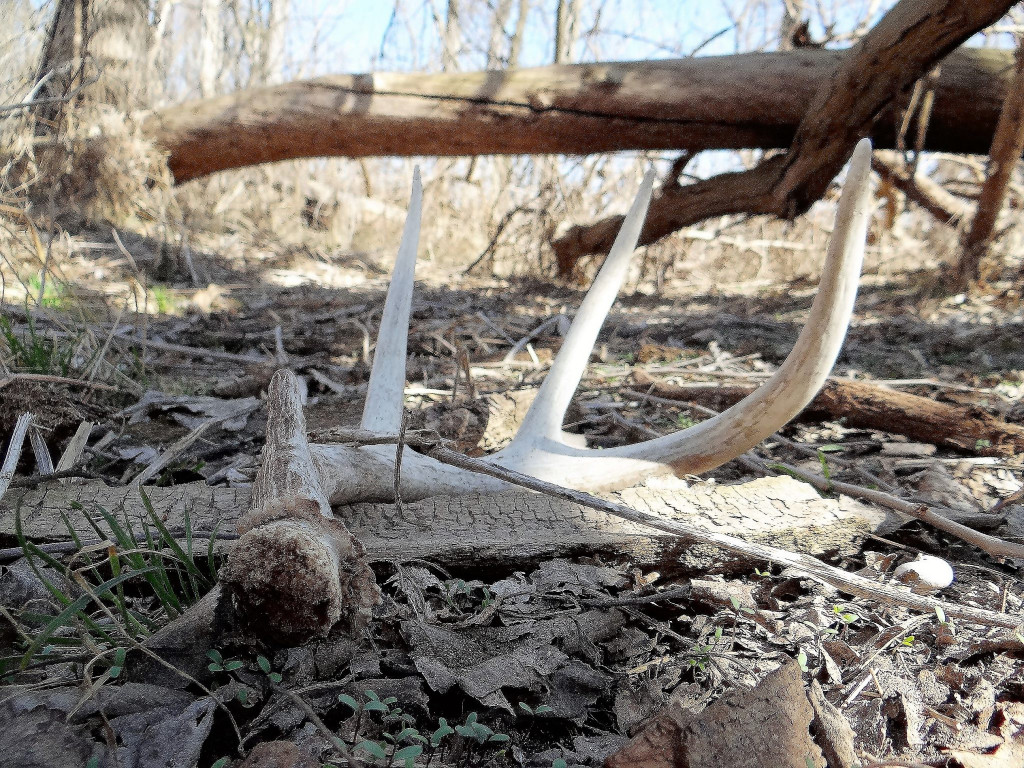
Based on white-tailed deer cast antler collections and camera trap research conducted by Brian Peterson and colleagues at the University of Nebraska-Kearney (UNK) approximately 35% of bucks cast by the end of February, 80% or more cast by the end of March and all by the end of April.
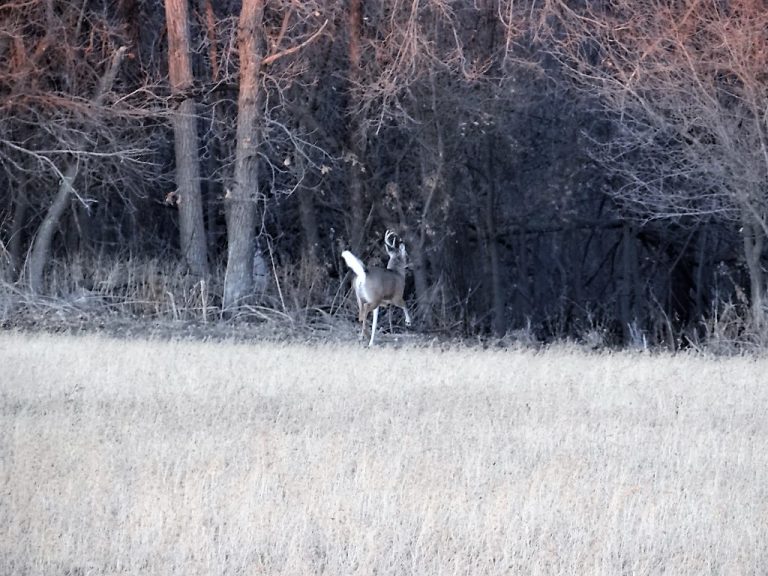
Wondering about cast mule deer and elk antlers? According to Luke Meduna, Nebraska’s Big Game Program Manager, hunt for the antlers of mule deer bucks and bull elk in western Nebraska during the months of March and April. Meduna says in most cases “mulie” bucks and bull elk in the west do not shed before March 1.
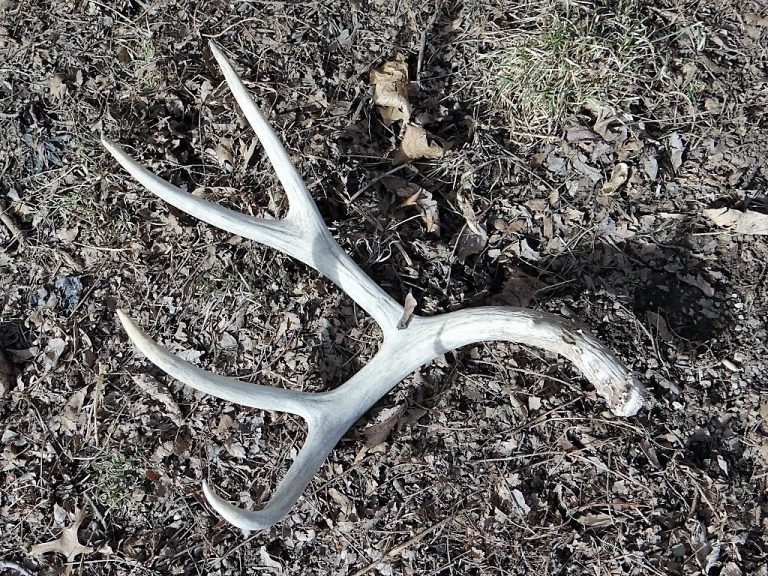
Some folks ask: Does Nebraska really law allow a person to pick up, possess, buy, sell, or barter with, antlers that have been shed or cast by deer and elk? The answer to that question is yes. Also, acquiring shed antlers on Nebraska Game and Parks Commission owned and managed properties is allowed.
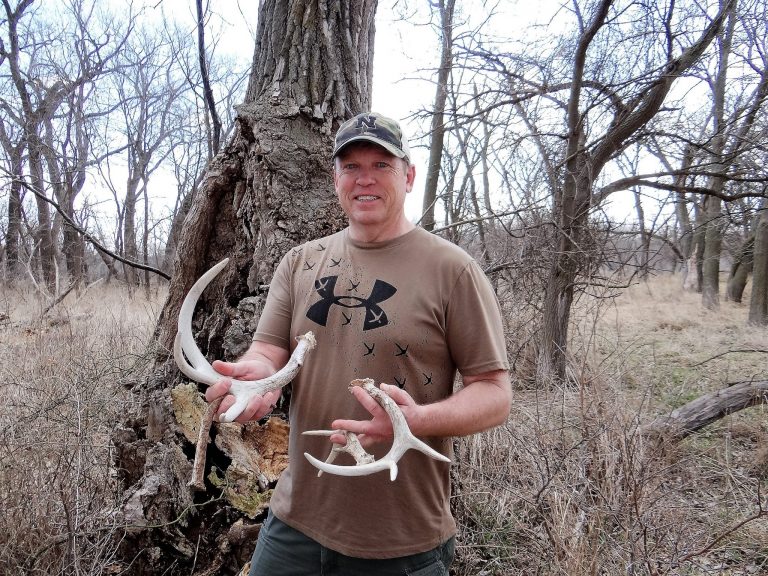
So what’s it like on a shed antler hunt? Some compare shed deer antler hunting session to an Easter egg hunt, but on a larger scale for better prizes and without all the candy, of course.
The objective of shed hunting is to slowly hike through the woods or fields in search of these hidden prizes — molted antlers! As you might expect, an antler lying on the ground or in brush isn’t necessarily easy to spot, especially if it’s small and it has been there a while or if there is a lot of grassy cover or deep snow. Their whitish-gray color can blend with cover on the ground. Sometimes, you’ll find a shed deer antler in the strangest of places. Also, each dropped antler is different and has one-of-a-kind characteristics much like snowflakes further lending to the intrigue of the hunt. Interestingly, you’ll find that some have even been gnawed by mice, squirrels, foxes and porcupines.
Finding deer antler sheds has become a very popular hobby for hunters and non-hunters alike. The rewards of a shed antler hunt are many. The antlers found in the wild can be used for everything from pure collecting purposes to dog chews to making crafts such as picture frames, knife handles coat racks and chandeliers. Shed antlers may also be shared with others who may not have access to nature. The antlers can even be scored by the North American Shed Hunter’s Club.
But, shed hunting as it is called, is really so much more than those things. It goes deeper. This kind of hunting stimulates the emotional connection we humans have to the natural world. It is about wonder and awe. It makes you wonder if there is a thick, tall, wide set of antlers with many points glimmering in the sunlight amid the snow cover or leaf matter of a forest floor. The awe enters the picture the moment you locate, handle and examine one of these hard, weathered pieces of material containing variety of minerals passed from soil to plants and condensed into blood-nourished bone.
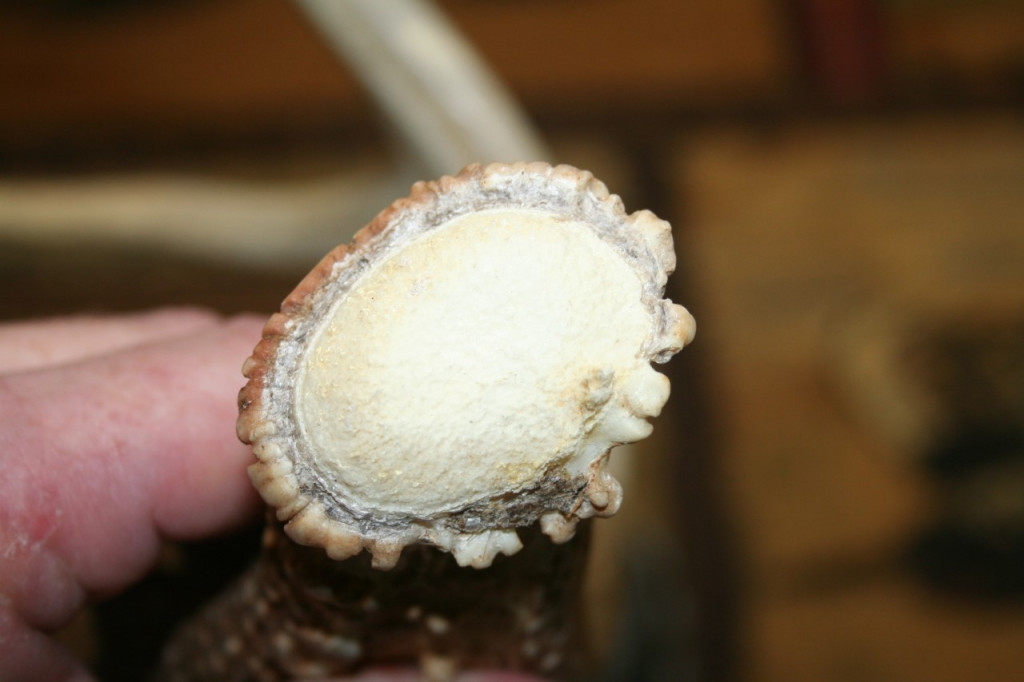
You then have directly connected with nature’s handiwork. For passionate shed hunters, it is an emotional rush when you find an antler in the woods, along the edge of an agricultural field or fence line on a pasture or grassland prairie. And, locating a matching set of shed antlers is like finding a pair of gold nuggets!

Shed hunting forces you to know and connect with the land. You’re constantly, closely surveying the countryside. You’re seeing a variety of wildlife species in the process, many different birds. You’re looking intently for signs made by deer. You’re specifically looking for fresh deer tracks, droppings and beds which are obvious indicators that you may be near some antler gold.
Coming across rubbed trees or dirt scrapes made by bucks along deer trails is cause for additional excitement and will certainly prompt you to keep moving throughout an area in the hopes that an antler is laying on the ground not far away.
Shed deer antler hunting really is a simple outdoor pursuit, It doesn’t take much to do. You need to have permission from landowners to go on their properties, a partner (for safety), an Android or iPhone (for map apps), the proper clothing, a decent pair of binoculars (to glass at extended distances) as well as a five-gallon bucket (hard-sided carrying device to help prevent getting impaled by antlers). Hunting for antlers is not a fitness race either, and should be done with a slower, more deliberate, leisurely pace so as not to walk past them.
There is also just something about just being in the woods in late winter and early spring. You can walk into a wooded location, sit on a log and glass for the tines of antlers without hearing hardly any noises, except possibly for the wind whistling through the trees and your partner checking on your location. The solitude alone though is worth an antler hunt!
Searching for antlers develops skills for hunters and all outdoor enthusiasts. After a few trips, you gain an understanding of particular areas. You learn the use of habitat by wildlife, and the patterns of deer and other wild animals related to weather. You learn what white-tailed deer have for a winter diet that will also help on future, late season hunts. You learn that deer are creatures of habit — going to the same proximity to spend the winter every year. You also learn that shed antlers offer a snapshot of what particular bucks or what caliber of bucks survived the hunting seasons and are living in a given tract of land for next year’s seasons.
For youth, shed deer antler hunting represents awesomeness. It is a nice change of pace, different scenery and good energy release. Kids naturally have the components needed to become successful shed antler hunters. They are low to the ground and curious, love to play games, enjoy finding treasure, get excited to be in a wilderness setting and possess a lot of energy. The more young people become interested in outdoor activities like shed antler hunting the longer they will carry their enthusiasm and appreciation for nature and memories of their adventures with them.
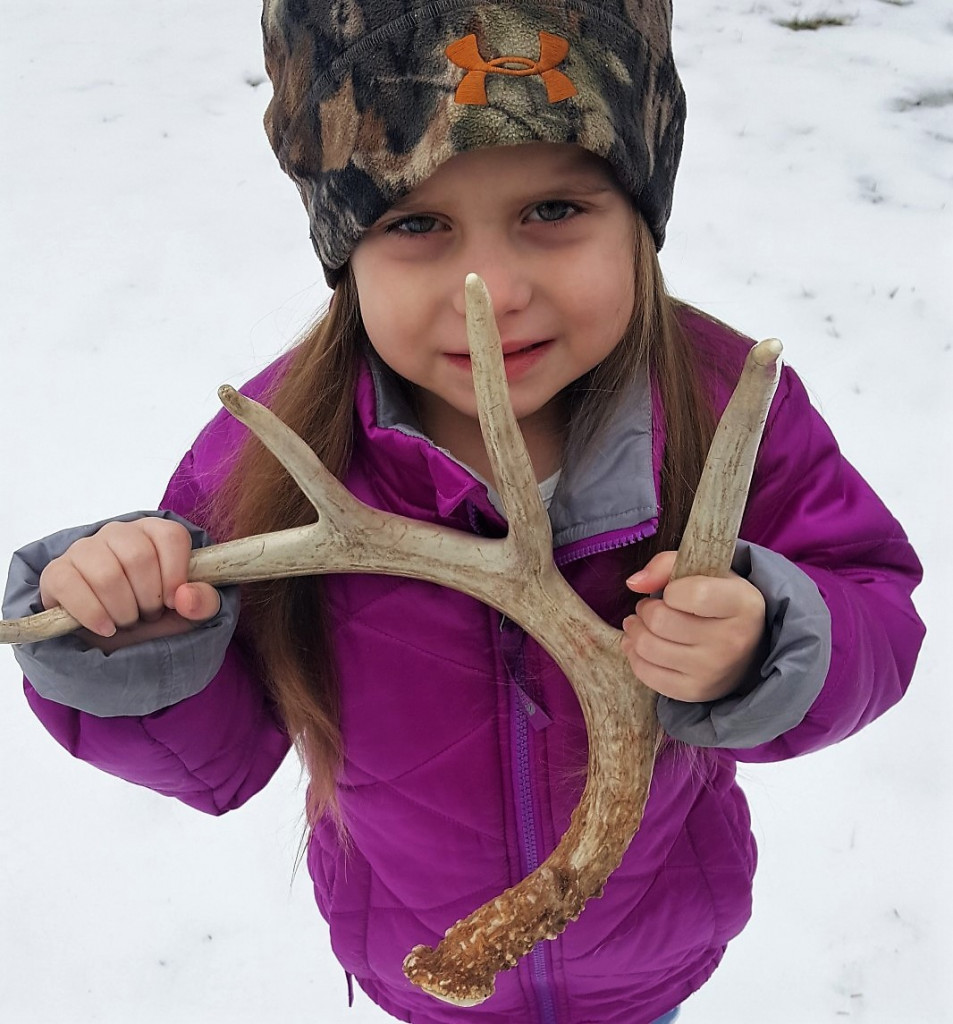
Where and when should a person go look for shed deer antlers? Anyplace where deer hang out regularly and their antlers can fall off, be jolted off or intentionally knocked off. Here are some tips on where and when to find them.
*CHECK THE MENU: In winter, seek areas where deer concentrate to feed. Often, one field, most likely a cornfield that has not been tilled, that has dense woodland cover nearby, will draw all the deer while other fields are left untouched.
*LOOK IN THEIR BEDS: Ovals in grass or snow denote deer beds. They may offer rewards for shed hunters because of the increased likelihood of finding matched sets of antlers, as well as small shed antlers. Be sure to look closely.
*DON’T GO TOO FAR PAST THE BEDROOM: Do not overlook primary deer trails leading into or out of bedding areas for shed deer antlers. Deer trails along south-facing slopes with mature hardwood trees, conifers or plum thickets nearby that have lower-hanging branches are always productive.
*WHERE THEY JUMP: Any spot where a buck has to jump such things as fences, creeks and ditches are all good places to search for shed antlers.
*THE SPECIAL DAYS TO ANTLER HUNT: If you’re serious about finding shed deer antlers, you need to gear into or around what are referred to as the “special days” to hunt for them at appropriately spaced intervals. These are President’s Day (Mid-Late February), St. Patrick’s Day (March 17th), April Fool’s Day (April 1st), Tax Deadline Day (April 15th) and May Day (May 1). By hunting sheds on or near these days, you can help eliminate constant stress on deer and frequently disturbing other wildlife.
*THE TRAIL CAMERA OPTION: Another option to know when to go hunting for shed deer antlers is to hang digital trail cameras around feeding areas like agricultural fields, or at least along the main trails leading to and from those feeding areas. Once the bucks in your images become antlerless, it will be time to start searching for sheds.
*SHED WEATHER: Regarding weather for shed antler hunting, believe it or not, rainy days are optimal days for seeking sheds because the antlers can shine and catch your eye. Also, don’t let snow cover stop you from shed hunting either as the antlers, or parts thereof, can really stand out and be much easier to detect!
*SLOW DOWN AND REALLY LOOK AROUND: UNK researcher Brian Peterson says it is easy to miss sheds, when walking a trail. “Occasionally stop and look behind you, he points out. “I have identified sheds this way. For example, I spotted a shed from a distance and was so excited that I snapped a picture, grabbed it and continued hiking. After and hour or so of searching I looped back through the area to find that the other side was just feet away in the shade of a fallen tree. I looked back at the photo on my phone and the shed was there the entire time. The lesson was, slow down and visually search the area.” Can you find the two sheds in the picture below?
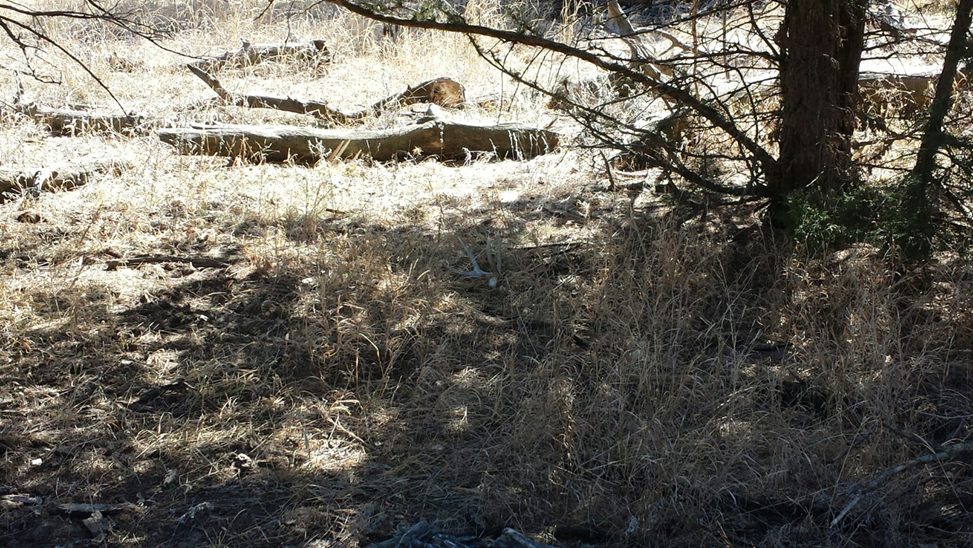
*TINES: When searching for shed antlers keep in mind you are not always looking for an entire antler but a small tine or curvature of the main beam. Old antlers are often time buried in vegetation. Always double check if something “feels” like an antler below your feet.
*HANGERS: “Sheds are also not always on the ground,” says Brian Peterson. “I have found a few ‘hangers’ elevated in brush, shrubs, bushes and trees.” Check out the pic.
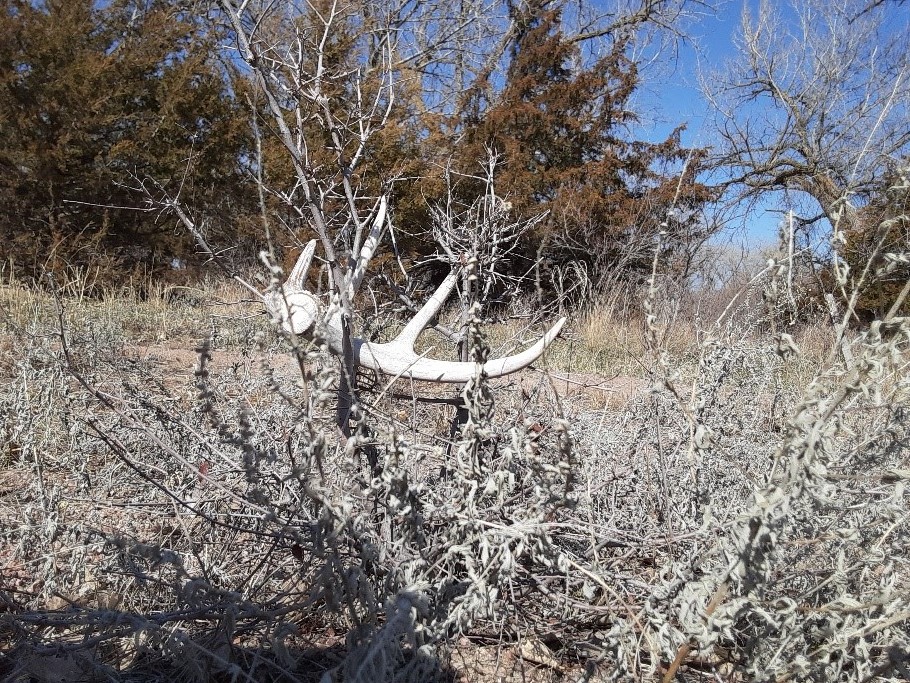
*SHED DOGS: “My dog, Ace, has enjoyed carrying shed antlers around the house since she was a puppy,” says Brian Peterson, UNK antler researcher. “Over the years she has been an excellent companion out in the field, and she has found a handful of sheds that I would have not found. One tip that I have learned to make her better at finding sheds is to slow down to let her work and smell the area.”
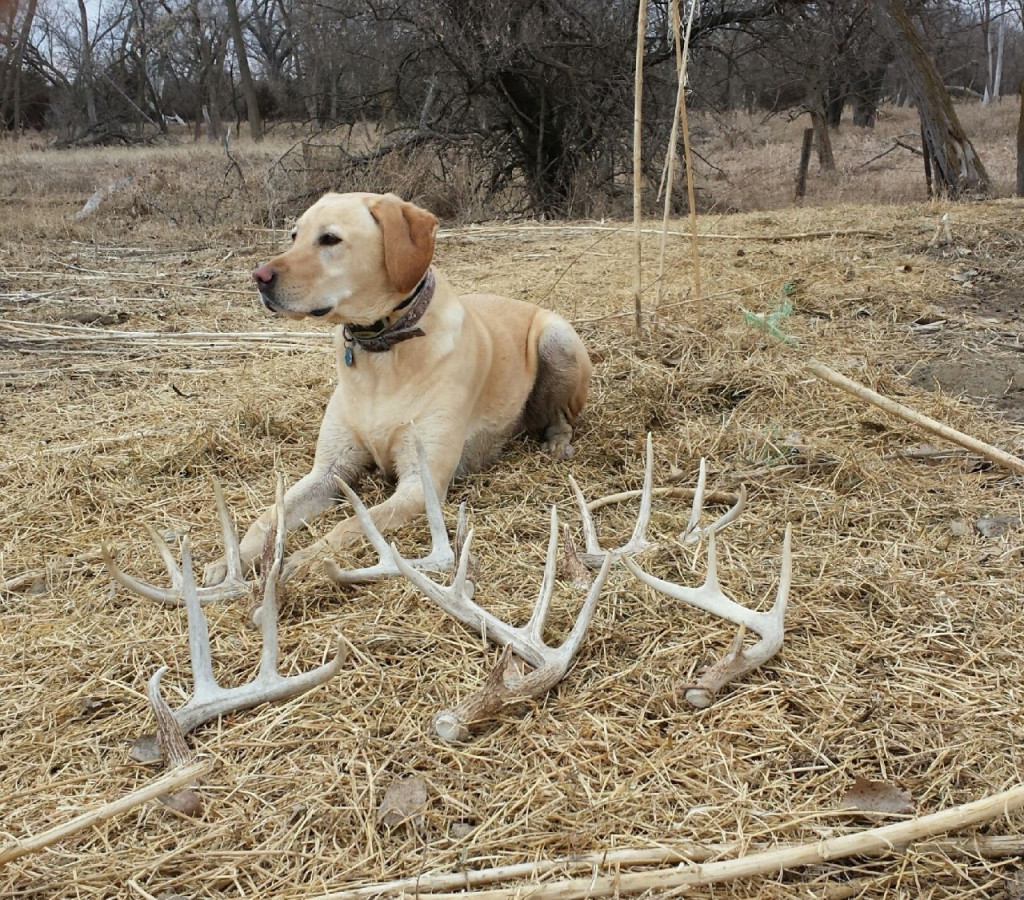
The post Shed Antlers: A Great Reason to Explore Nature appeared first on Nebraskaland Magazine.
















